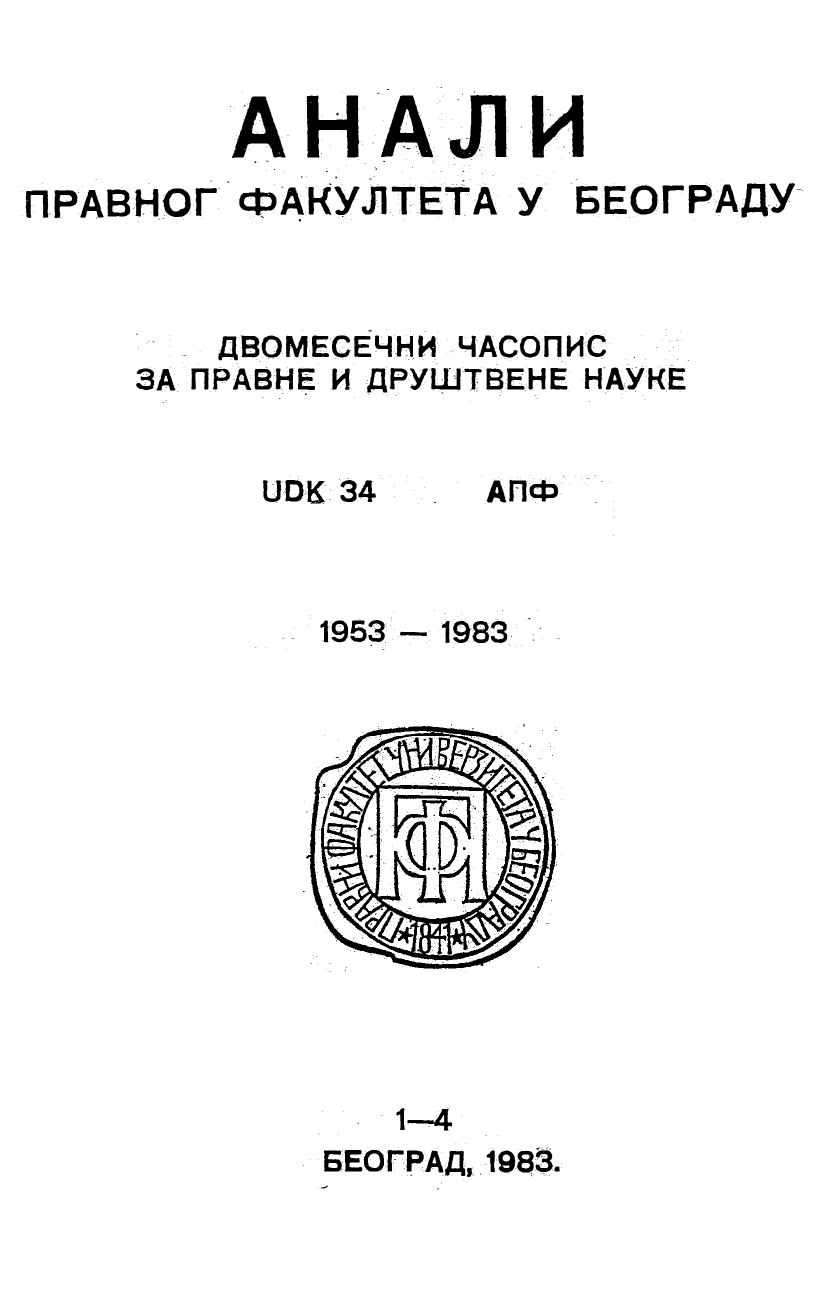КАТЕГОРИЈА „КОНКРЕТНЕ ЦЕЛИНЕ” У ДИЈАЛЕКТИЧКОЈ МЕТОДИ МАРКСИЗМA
THE CATEGORY OF „CONCRETE TOTALITY” IN DIALECTIAL METHOD OF MARXISM
Author(s): Dragica VujadinovićSubject(s): Philosophy, Philosophical Traditions, Marxism
Published by: Правни факултет Универзитета у Београду
Summary/Abstract: The ,.Concrete totality” is the central category of Marx’s dialectical method, and the way how this concept is interpretated makes the essential difference between marxistic and bourgeouis way of thinking. Ther is, also, the point for diversion between, on one side, dogmatic and uncritical currents in Marxism itself and, on the other side, the critical and revolutionary meaning of authentical marxism. Marxistic point of view referes to the totality of the contemporary epoche, tending to be in the same time the critical presentation of Capitalism and, also, the scientific explanation of the real possibility of Socialism. Concerning the cathegory of „Concrete totality” — framed in such a way, as the „beginning” of ther „dialectical presentation” is to be taken the cathegory of the labour force as the commodity. That’s because in its contradictions, (between its using value and value, as well as in its using value alone), is in elementar form presented the contradiction inside the concrete-historical (contemporar) praxis — the contradiction between capitalistic development and the development of universal, creative human praxis, (which is mediated by capital, but essentially overwhelms his frames — both in the real working process and, also, in the class struggle against the capital/ Respectively, this category contents in the same time the beginning of the capital’s constitution and, also, the „seed” of the possibility for his abolition. The dialectical presentation from the „beginning” to the „Concrete totality”,) the „theoretical reproduction from apstract to concrete”) means the dinamic-genetical dimension of the category of „Concrete totally”; and that her dimension is not in any way to be diverted from her meaning the relation of phenomena and essence (vertical dimension), as well as the relation of parts and totality (horizontal dimension). There are, also, not to be neglected the dimensions in which this category represents the totality of social relations, respectively — the totality of two classes (bourgeois and proletarian one), and in which is treated the subject of her comprehension. The category of „concrete totality” — determined in such a way, is supposed to be the apstractive, theoretical-methodological frame or instruction for concrete-historical, (empirical) investigations of contemporary social processes from the marxistic point of view.
Journal: Анали Правног факултета у Београду
- Issue Year: 31/1983
- Issue No: 1-4
- Page Range: 181-191
- Page Count: 11
- Language: Serbian

